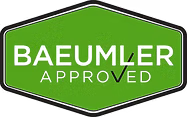Background
In early August 2025, CPR24 Restoration responded immediately to a water damage emergency in a Toronto home. The basement suffered severe water intrusion that damaged flooring, drywall, and baseboards. This Toronto basement water damage required quick action to prevent mold growth, structural deterioration, and to contain moisture.
Cause of Damage
After inspection, the team identified several causes:
- Heavy rainfall and stormwater backflow caused basement flooding.
- A burst plumbing line or faulty appliance connection contributed to water intrusion.
- Water entered through foundation cracks.
As a result, these areas suffered most:
- Finished basement flooring—laminate and hardwood.
- Lower drywall sections along basement walls.
- Wooden subfloor and underlayment in multiple areas.
- Tile flooring with sub-grout water penetration.
Assessment & Inspection
Thermal Imaging
Technicians used a FLIR E50bx thermal camera, which revealed temperature differences. These differences highlighted hidden moisture behind walls and under floors, where water had saturated materials during the Toronto basement incident.
Visible Damage
During inspection, the team observed:
- Warped and separated hardwood and laminate planks.
- Stained, swollen, and deteriorated baseboards and drywall.
- Black discoloration on subflooring, signaling possible mold.
- Crumbling gypsum drywall after baseboard removal.
Moisture Mapping
Moisture readings confirmed levels well above safe limits. Therefore, immediate drying was necessary to address the Toronto basement water damage.
ResWater Extraction & Initial Mitigation
First, the crew extracted standing water using commercial-grade equipment. Next, they carefully assessed electrical safety before starting the drying process. As a result, the environment became safe for further restoration work needed for Toronto basement water recovery.
Controlled Demolition
To begin with, the team removed approximately two feet of lower drywall and baseboards to enhance airflow and eliminate damaged materials. In addition, they lifted water-damaged laminate and hardwood wherever swelling or mold appeared. However, in certain tiled sections, they left the tile intact but instead exposed the subfloor underneath to ensure thorough drying, crucial after major basement water damage.
Structural Drying
- Air Movers: Afterward, the team positioned multiple low-profile centrifugal units to direct airflow across floors and into wall cavities.
- Dehumidifiers: Meanwhile, they deployed large LGR units to continuously extract moisture; therefore, drying times were shortened and secondary damage was prevented.
- Containment Barriers: Furthermore, technicians sealed unaffected areas so that drying efforts remained concentrated where they were needed most.
Monitoring
Each day, the crew checked moisture levels to track progress. If readings lagged, they then adjusted equipment placement for better coverage. Consequently, optimal drying conditions were maintained throughout the process, essential for resolving the basement water damage in Toronto.
Mold Prevention
Finally, workers applied antimicrobial solutions to framing, subfloors, and wall cavities. In doing so, they created a protective barrier that prevented mold growth and ensured the safety of the restored space.
Outcome
After 5–7 days of focused drying and monitoring:
- Moisture in all structural components dropped to safe levels.
- Unsalvageable materials were disposed of per local environmental regulations.
- The basement was clean, dry, and ready for reconstruction.
Key Challenges
- Diverse flooring types required tailored removal and drying techniques.
- Advanced subfloor deterioration required full replacement in some zones.
- Confined basement space demanded strategic placement of drying equipment for efficiency.
Conclusion
This Toronto water damage restoration project shows how fast response and professional methods prevented costly damage. Because CPR24 Restoration acted promptly, they completed basement flooding cleanup effectively, eliminated mold risks, and prepared the space for safe reconstruction.















